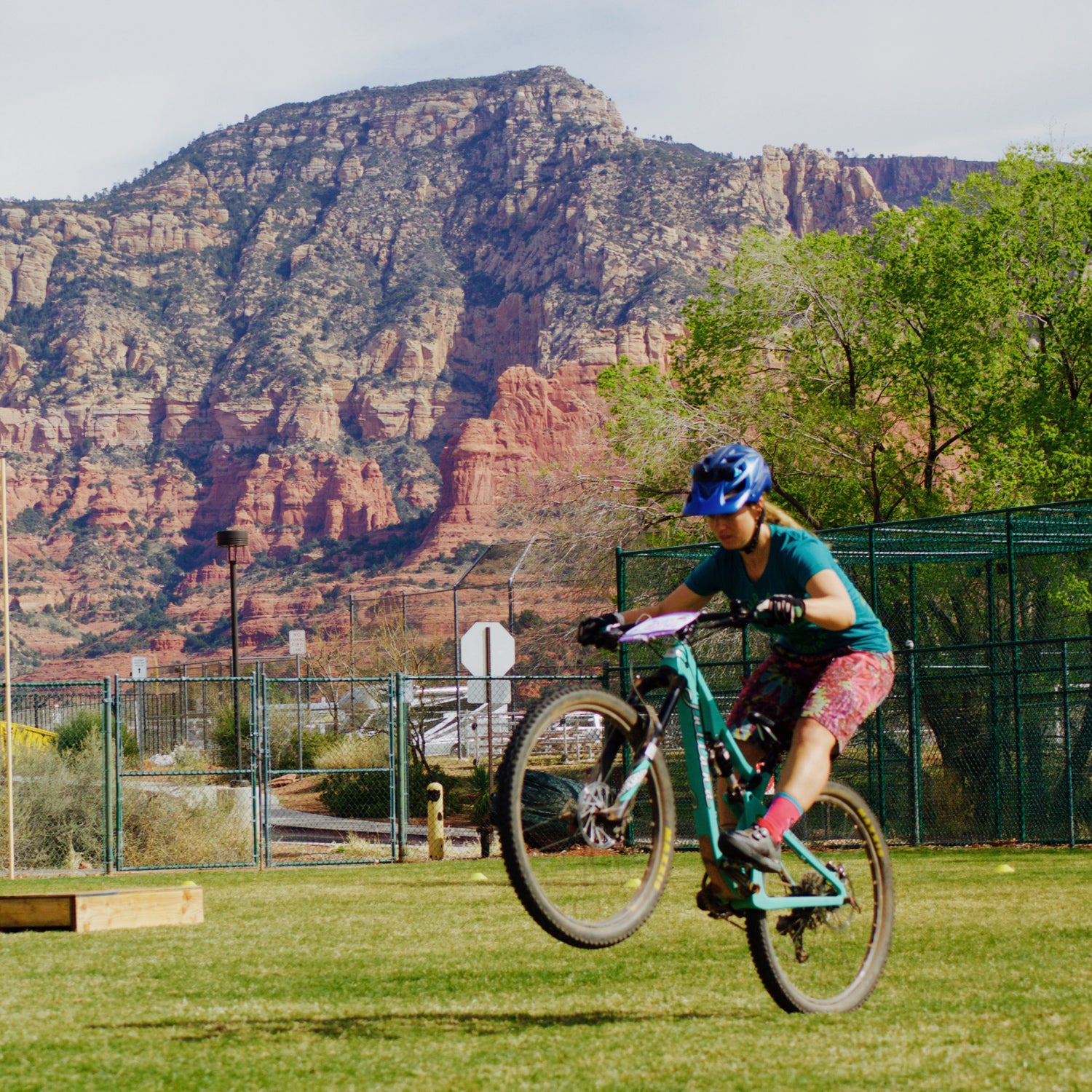The best way to get better at mountain biking? Ride your bike. A lot. The second-best way: sign up for a good clinic. Summit County, Colorado-based┬áÔÇöwhose┬ámission is to cultivate women mountain bikers though high-quality instructionÔÇöoffers some of the best. The organizationÔÇÖs workshops begin with skills and drills in a field, then progress to practical application on the trails or in the park. The event┬áalso offers yoga, gear talks, and, of course, happy hour. Here are a few pro tips from the recent VIDA clinic in Sedona, Arizona.┬á
1. Stay Loose 
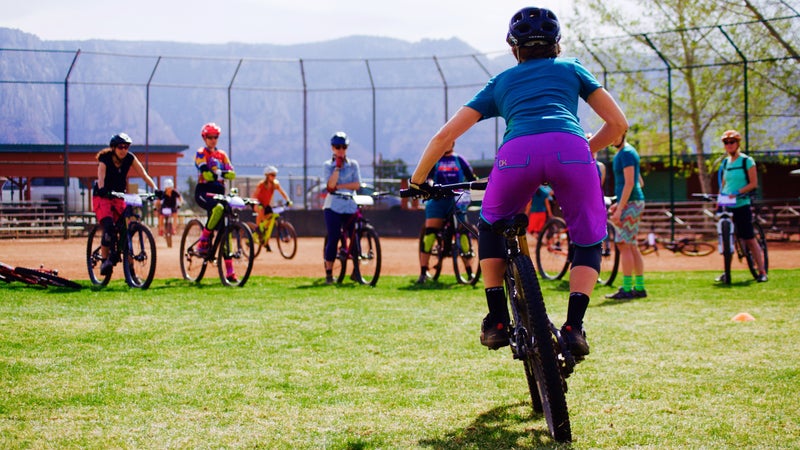
A white-knuckle death grip on the handlebars doesnÔÇÖt mean youÔÇÖre in control. Loosen your grip, and relax your arms and shoulders. If theyÔÇÖre tight, take a deep breath to shake them out. The same goes for the lower body: hover over the saddle without clamping it with your legs. In ready riding position, your legs should be straight, but your knees should be soft and ready to absorb impacts.┬á
2. Lean into the Corner 
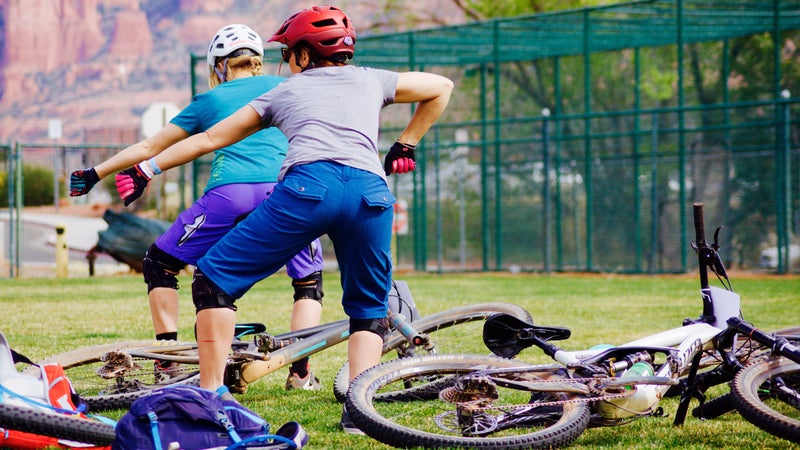
Keep your body upright and move the bike from side to side as you corner. This helps you work the bike, rather than letting it work you. 
3. Load, Explode, and Pull
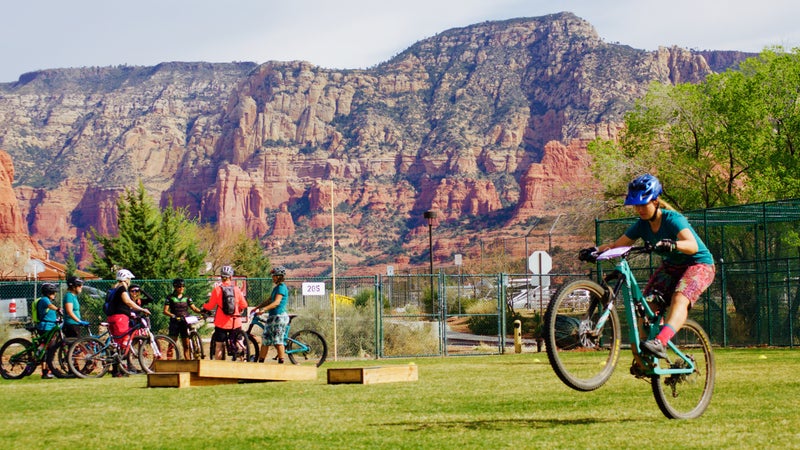
To get your front wheel over an obstacle, start with momentum. Then, just before you get to the step-up, preload your front suspension by lowering your center of mass, bending your elbows, and putting even pressure on the pedals. Next, explode upward and pull back while driving your feet down, pushing the pedals forward and away from you. Allow your weight to shift back with your arms straight. Then keep rolling. 
4. Pump It 
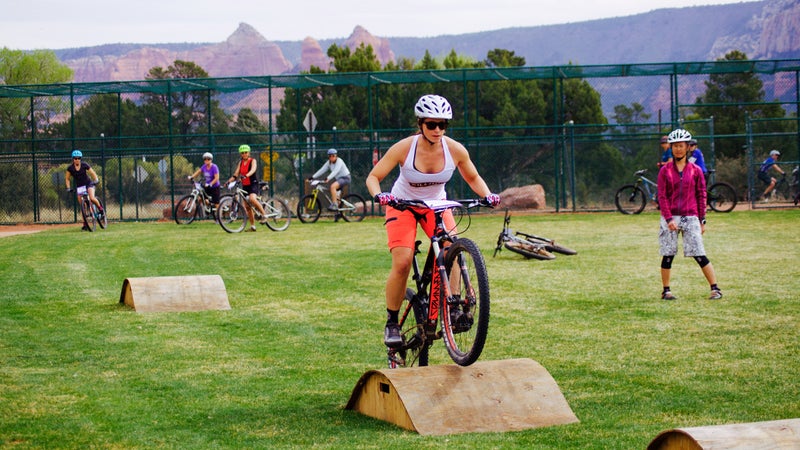
Pumping is the art of managing pressure to minimize impact and generate propulsion. As you approach a roller, unweight your front wheel. As the wheel crests the top of the roller, transfer your weight forward and push down with your arms (and then with your feet). You should roll through without losing speed. 
5. Look Ahead
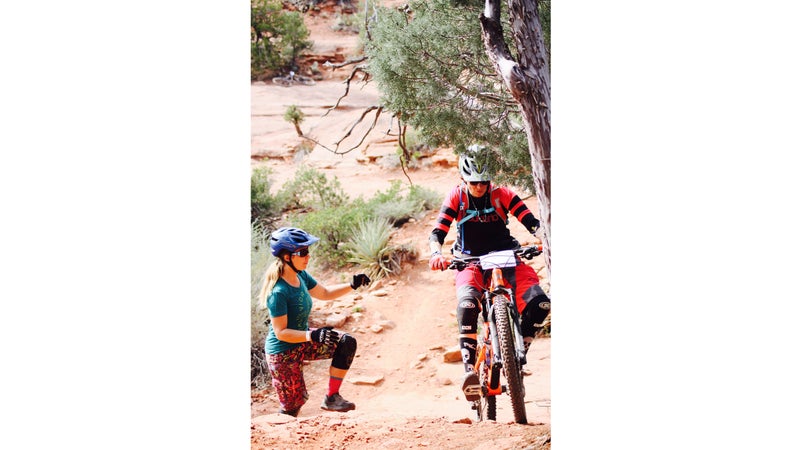
It may seem obvious, but looking ahead helps you anticipate your next move. As you ride, think about trail direction, upcoming obstacles, and whether youÔÇÖre in the right gear. Instead of focusing your gaze on the prickly pear to your left, rely on your peripheral vision to get a broader view of the trail.
6. Pick Your Line
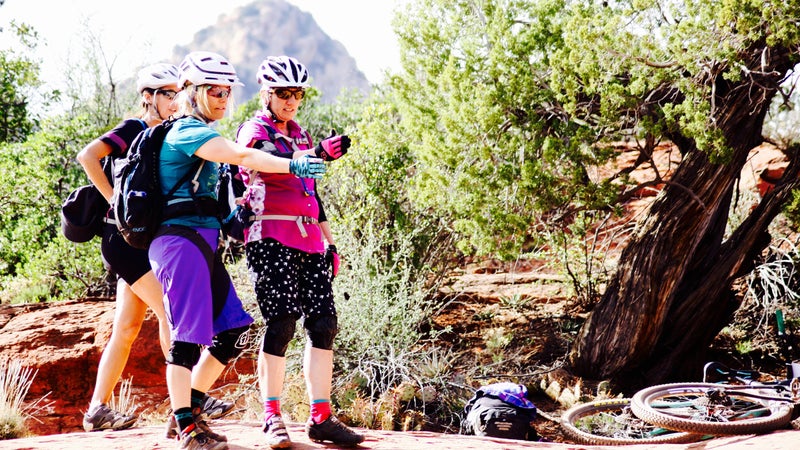
Choosing your line means knowing where you want to ride before you get there. On techie trail sections, set your bike down, walk along your intended route to get a good view of it, and try to imagine where you plan ride to avoid obstacles. 
╠ř7.╠ř░ń┤ă│ż│żż▒│┘
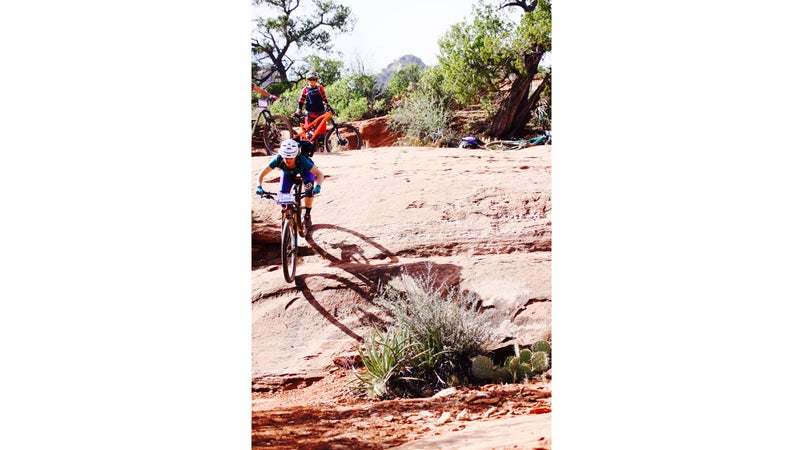
Once youÔÇÖve decided to try a new feature, commit. Whether getting your bike up and over an obstacle, hitting a drop-off, or rolling down something steep, momentum is your best friend. Your wheels want to roll, and the suspension is there to absorb the impact. Suddenly hitting the brakes or unclipping is more difficult┬áand can be more dangerous.┬á
8. Be Prepared
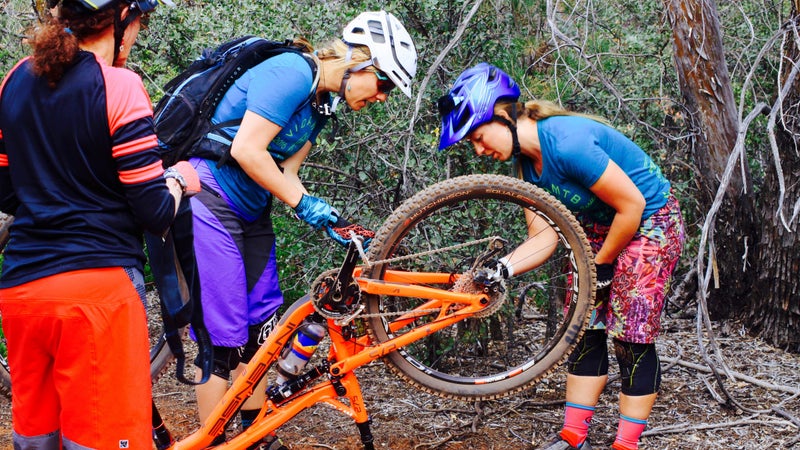
You should pack a few essentials for every bike ride. A┬áspare tube, tire levers, CO2 cartridge, multitool, and water are the most important, but itÔÇÖs also good to have a small first-aid kit (tweezers are required for desert riding), snacks, and extra layer.
9. Stretch It Out
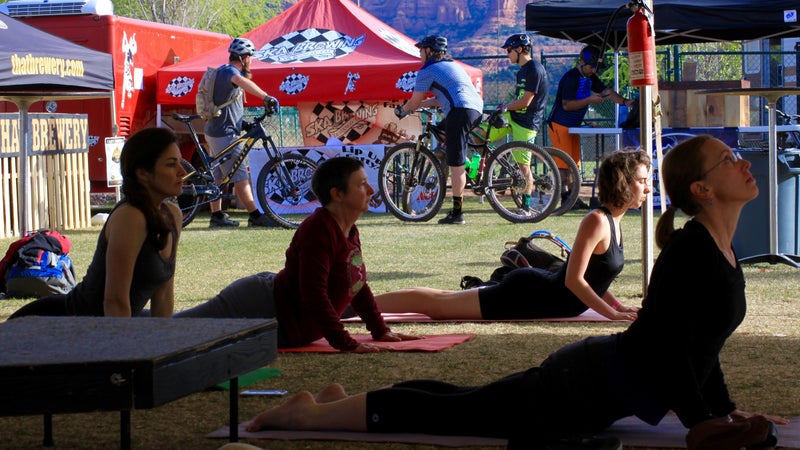
Getting strong on the bike doesnÔÇÖt just come from hours in the saddle. Yoga can help clear the mind and balance the body, which translates to focus and core strength on┬áthe trail.┬á
10. Hit Happy Hour 
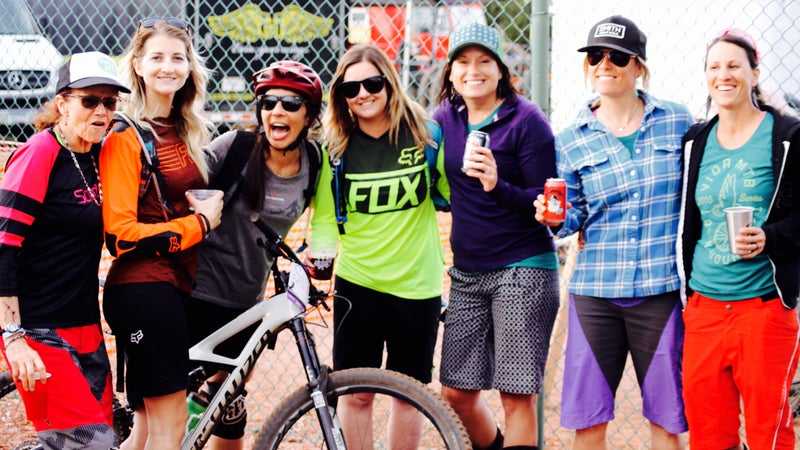
The stoke that comes after riding bikes with friends should be savored for as long as possible. Post-clinic debriefing is as important as the instruction, and VIDA partners with local breweries to sponsor the socialization. Stories are swapped, phone numbers are exchanged, and plans for tomorrowÔÇÖs ride are finalized.┬á


